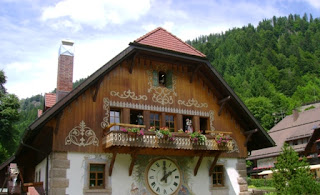Visiting Moti Daman Fort - brief history and overview
When visiting Daman, don't restrict your itinerary to visiting the beaches and just going around the outside of the Moti Daman Fort or entering and exiting through the gates. You must explore it properly inside as well. There is quite a lot that will interest you within that vast space, including charming churches, well-maintained gardens with truly magnificent flowering plants, monuments, and, generally, the remarkable layout of various administrative offices within. There’s a really charming and quaint blue-and-white lighthouse, too.
I spoke of exploring, and here’s a very useful tip – do take
a guide or ask inside for directions to go up to that part of the fort where
the blue-and-white lighthouse is located. I came to know from a relative's kid that they did visit the fort but never went inside the actual fort's main area and hence missed the lighthouse
altogether because they were depending on Google maps for directions and ended up
simply going in a circular motion, starting and ending at the same point!! They
were unable to locate the road inside the complex which led to the fort steps
that take you to the upper section where you can get a magnificent view of the
Arabian Sea, and also look across to see the St. Jerome Fort of Nani Daman. So don't miss this on your visit to
Moti Daman fort! If I recall correctly, our taxi driver-cum-efficient guide took us inside via the road next to the white-and-gold Liberation Memorial.
A brief history
Established in 1559, the Moti Daman Fort has a polygonal design with solid walls withstanding all-weather conditions through so many past centuries. The ramparts are really high, with ten angular bastions and beaded moulding above the cornice level. There is a moat that protected it against invaders, with a northern gate (known as the sea gate) and a southern gate (known as the land gate).
You can get this and other details of the Fort on the
Board displayed by the Daman Tourism Department outside the Fort’s northern
gate.
The inscriptions
Look out for these inscriptions-
 |
| Martin Afonso name inscribed on the wall |
The above one mentions the name of Martim Afonso de Sousa,
Portuguese Admiral and explorer.
This one shown below states ‘By Order Region of 1797 it would be here
build…’ (don't know what the rest of it is) –
 |
| Portuguese inscription |
Look above the archway of the gate to see these Portuguese symbols-
 |
| Portugues symbols and text above the archway |
The huge door of the fort, too, has an inscription that indicates it was built on 8th August-
 |
| Fort door |
There is also an inscription on the monument to soldiers (image
below) where the word ‘tumulus’ is mentioned. A tumulus (plural tumuli)
is a mound of earth and stones raised over a grave or graves.
 |
| Monument to soldiers |
The little white house
Just inside the fort, adjacent to the gate is a small white
house that was the home of the poet Manuel Maria Barbosa Du Bocage (his pen name
was Elmani Sadino).
 |
| Bocage house |
The lighthouse inside the Fort
Actually, there are two lighthouses, and not just one. There is the quiant blue-and-white one which will excite a lot of people who love selfies!
 |
| Blue-and-white lighthouse |
 |
| Entrance and steps spiraling upward |
The other lighthouse is on the other side (it was inadvertently caught in the above frame in the left corner!), but visitors are not allowed inside the premises where it is located, as indicated by the sign board near the gate there.
 |
| White-and-grey lighthouse |
However, there are plenty of points where you can capture them in a single frame. Here’s a short video clip-
Talking about capturing in frames, there is plenty for a
photography enthusiast. Like this one through the grilled design above the entrance steps-
 |
| A great photo-shot spot |
The garden
There is also a very well-maintained garden near the steps of the fort where you can stroll around and get wowed by the blooms.
The well-maintained, neat green landscape just near the steps of the Fort-
There are some lovely blooms in the garden's central space-
Don't miss the gently swaying shrubbery at the side of the pathway-
Details of other places inside the complex, including the Churches, monastery ruins, a children's park, administrative buildings, etc will be updated as well through separate posts.







Comments
Post a Comment